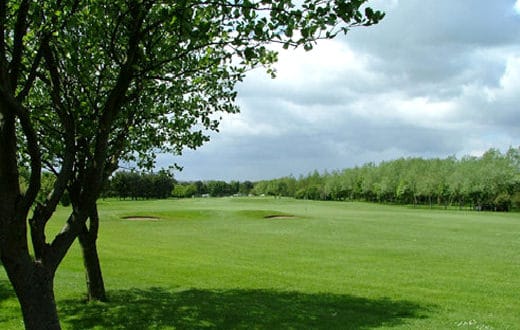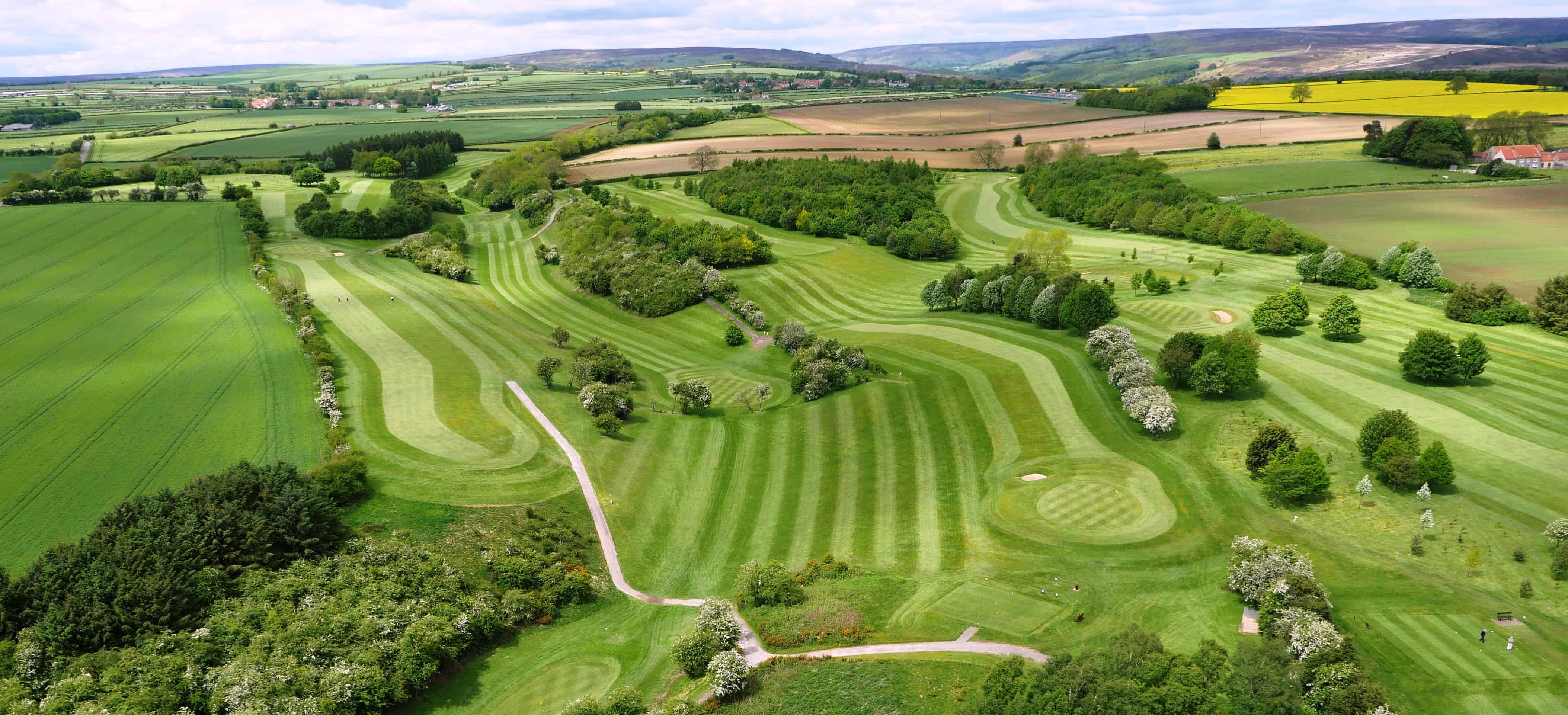Phone
Nearby Courses
15 miles away
Bridlington
17 miles away
Flamborough Head
19 miles away
Kirkbymoorside
Ganton Golf Club
Ganton Golf Club | NCG Top 100s: GB&I Golf Courses
This is golf as it was meant to be played, from the moment you step into a warm locker room, complete with a caddy master and prints of famous courses and golfers decorating the room.
The clubhouse is where the luxuries end, however. Step on to the 1st tee and prepare for a battle with the elements. Situated on flat land between the Yorkshire Wolds and the North Yorkshire Moors, Ganton enjoys something close to its own microclimate, one that perplexes even the course starter.
And once you are out, well, you are out. Unlike many links courses, Ganton does not travel directly from the clubhouse for nine holes before turning back. Indeed, on only two occasions do you play successive holes in the same direction.
Rather like Muirfield, a club with which Ganton has more than a little in common, many holes tend to be played in a crosswind. Despite this, the 9th runs along the far side of the course, well away from the comforts of the clubhouse. The closely-cropped turf is a ball striker's paradise while the greens are fast and true, but with some evil humps and hollows.
In recent times it has hosted the Senior Amateur and Brabazon Trophy which speaks of the quality of the place and it is generally regarded as at least one of the three best courses in Yorkshire, along with Alwoodley and Moortown.
Yet it remains a course with which only the golfing cognoscenti are acquainted. That is partly due to its remote setting, but compared with outposts such as Royal Dornoch, Royal West Norfolk and Royal St David's, it is positively suburban. The real reason so comparatively few golfers make the pilgrimage is because it does not lie in an area with any great golfing pedigree - the nearest courses of a comparable quality are Fulford in York and Alwoodley and Moortown, in Leeds.
Unlike in the Southport area, for example, where championship courses literally border on to another in places, the Yorkshire coast is not an established golfing holiday destination. Suffice it is to say, Ganton is well worth a long trip just to play its 18 holes.
Despite being 10 miles inland of the seaside resort of Scarborough, Ganton has tangible links quality with its tight, springy turf and dense gorse bushes. There are also crops of pine trees and some of the biggest bunkers you will ever see on a golf course, which make it an incredibly hard layout to pin down in terms of character. What is not in doubt is its quality.
In recent times leading course architect Martin Ebert has overseen some notable course renovations which have been particularly well received. The most obvious work has been the re-introduction of sand wasteland areas which were once a feature of the course but had been lost over time.
Otherwise there has been huge investment into green extensions, bunker, revetment renovations, adding ‘lost’ bunkers back in, stripping back gorse, fine-tuning the wispy rough, improvements to the irrigation system, new sheds, facilities and machinery and a new head greenkeeper.
Visit Ganton's website here.
Go back to the NCG Top 100s Homepage.
Otherwise there has been huge investment into green extensions, bunker, revetment renovations, adding ‘lost’ bunkers back in, stripping back gorse, fine-tuning the wispy rough, improvements to the irrigation system, new sheds, facilities and machinery and a new head greenkeeper.
Visit Ganton's website here.
Go back to the NCG Top 100s Homepage.
A Brief History of Ganton Golf Club
Ganton, located in North Yorkshire, is steeped in history and regarded as one of the most esteemed and challenging golf courses in the United Kingdom. Established in 1891, Ganton's history is intertwined with the evolution of golf in England.
The course was designed by the renowned golf architect Tom Chisholm, and its layout is often praised for its natural beauty and strategic design. Ganton's sandy heathland terrain allowed Chisholm to create a course that flows seamlessly with the landscape while presenting golfers with a diverse range of challenges. The famous golf writer Bernard Darwin once remarked that Ganton was 'in no way an artificial course'.
Since then modifications have been made by the likes of James Braid, JH Taylor and Harry Vardon, Harry Colt, Alister MacKenzie, and Tom Simpson – Vardon was the club's professional between 1896 and 1903.
Throughout its history, Ganton has been the venue for numerous prestigious golf tournaments. It hosted the Ryder Cup in 1949, where Ben Hogan captained the winning US side. This event further solidified Ganton's reputation as a championship-calibre course. In 2003, it become only the third club in Britain, after Muirfield and Royal Birkdale, to have played host to the Ryder Cup, Walker Cup and Curtis Cup. Given this fact, it is no surprise that in surveys, Ganton is often rated among the best courses in the British Isles.
If the quality of a course can be gauged by the calibre of the names on its honours board then Ganton belongs in the very highest company. Muirfield, by common consent one of the finest courses in these islands, boasts Jack Nicklaus, Tom Watson, Nick Faldo, Harry Vardon and Gary Player among its Open champions. Ganton, by contrast has largely eschewed professional tournaments through its rich history, preferring to host international amateur events. Yet among those to have enjoyed success at the East Yorkshire club include Max Faulkner and Jose Maria Olazabal.
Ganton Golf Club Review | NCG Top 100s: GB&I Golf Courses
The Front Nine
Ganton's defining feature is its bunkering. The course is renowned for its deep and strategically positioned bunkers, which demand precise shot-making and strategic decision-making from golfers. The heather-lined fairways, rolling hills and challenging wind conditions contribute to the course's difficulty and charm.
The closely-cropped turf is a ball striker's paradise while the greens are fast and true, but with some evil humps and hollows. The opening three holes are far from straightforward but nor are they excessively daunting. Both the 1st and the 2nd feature blind tee shots, but in both cases it is possible to 'sense' where the fairway lies. The 3rd, depending on the conditions, can be drivable, but it is fraught with danger, with out of bounds down the right and heavy bunkering and gorse across the corner of the dog leg.
The fun really begins at the 6th, a tough par four with another batch of cavernous bunkers to avoid. The emphasis at Ganton is on risk and reward, where a gamble has to be assessed as to whether it is worth taking on a bunker or a patch of rough to get closer to the green. The rewards are immense, the penalties draconian.
An example is the par four 7th, a sharp dogleg to the right, with the inside angle protected by a clump of greedy bunkers. Play safe and accept an approach in excess of 200 yards or cut the corner to set up a wedge to the rolling green.
The last hole on the front nine is a supreme par five where the longer the drive, the narrower the fairway is. It is comfortably reachable in two for long hitters but the second shot, especially, must be threaded between bunkers to find the uncommonly small green.
The Back Nine
This begins with a short hole that plays into and across the prevailing wind before the 11th, with its generous fairway surrounded by fearsome gorse, moves back towards the clubhouse. Another change of angle takes the 12th sweeping round in the opposite direction. It is a hole that has a distinctly parkland feel to it, especially in autumn.
Like the 9th, the 13th is a three-shotter reachable in two but only with a pair of the most accurate shots. Playing for a five on both holes should not prove too difficult but attacking can be costly if power is not allied to great precision.
The last respite before the fearsome home stretch comes in the shape of the 14th, a cracking short four that yields nearly as many sixes as it does birdies. If your score is not made by then, it is unlikely it ever will be because the final four holes demand supreme shot-making.
The 15th is a long four that plays every inch, with the small hollow in front of the green making it difficult to chase a shot on to the green. The next hole is almost unique in featuring a drive made blind not by a hillock, nor a clump of bushes, but by the gargantuan bunker that spreads across the entire fairway and into which, it is said, a bus could fit.
15 and 16 run parallel to one another, playing across the prevailing wind, while the 17th is generally downwind, meaning the difficulty lies less in the length than in controlling the shot.
The 18th is everything a closing hole should be. From the tee, the wind comes from the left and into the player. The fairway makes an abrupt turn to the left at the driving distance, meaning the approach is played directly into the wind. The green is protected by bunkers left and right and slopes considerably, making three putts a distinct possibility.
Fortunately, the most comfortable and cosy clubhouse awaits, meaning soothing recuperation the moment one leaves the course. Over a pot of tea, or maybe even something a little stronger, abiding memories of Ganton will already be seeping into your subconscious.
Where is Ganton Golf Club located?
Ganton is less than 10 miles from Yorkshire's east coast and, coming from York along the A64, is a little over 30 miles from York.
Both Leeds Bradford Airport and Teesside International Airport are located around 90 minutes from Ganton, for international visitors to the golfing venue.
Both Leeds Bradford Airport and Teesside International Airport are located around 90 minutes from Ganton, for international visitors to the golfing venue.
How much is a green fee at Ganton?
A round rate on Monday to Friday, Saturdays from 1.30 pm and Sundays from 10.30 am is £175. This is available to GB&I Golf Union Members with a WHS Number. An overseas round rate is £200. A twilight round (from 4pm) offers some great value at £90.
Is Ganton suitable for beginners?
It is testing but not unplayable. The best piece of advice is to stay out of the bunkers, where many of them have steps down which gives you some idea of their depth.
Does Ganton offer accommodation?
Yes, a Dormy House has five en-suite bedrooms (3 x twin and 2 x singles) and can accommodate up to eight golfers. All the rooms have televisions, hairdryers and tea/coffee making facilities. From 8.30am you can enjoy breakfast in the clubhouse.
Visit Ganton's website here.
Go back to the NCG Top 100s Homepage.
Visit Ganton's website here.
Go back to the NCG Top 100s Homepage.



